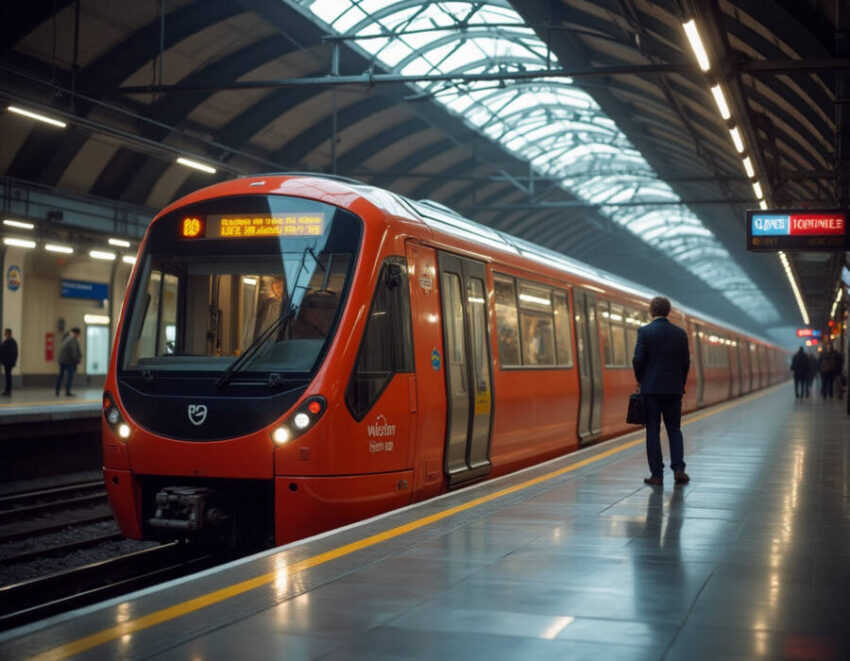Wednesday, June 25, 2025

The United Kingdom’s ambitious plan to modernise public transport in the North East through a three hundred sixty-two million pound Metro overhaul is facing growing scrutiny, as repeated technical failures threaten to derail its promise of improved connectivity and commuter convenience. Despite launching what was billed as the most transformative upgrade in the Tyne and Wear Metro’s history, the project has suffered multiple setbacks—including air-conditioning faults during extreme heat and serious door malfunctions—raising questions about the reliability of the high-tech fleet and casting doubt over the long-term success of this critical infrastructure investment.
UK’s North East Metro Overhaul Hits Another Major Setback Amid Heatwave-Triggered Faults
A multi-million-pound public transport revamp designed to revolutionise connectivity across Tyne and Wear has encountered yet another major setback, further delaying the region’s long-anticipated transit upgrade.
Originally unveiled with great optimism in December 2024, the £362 million project led by Nexus marked a historic moment for North East England’s transportation network. The ambitious initiative introduced a brand-new fleet of high-tech trains intended to modernise the Tyne and Wear Metro, which serves hundreds of thousands of daily commuters across Newcastle, Sunderland, Gateshead, and surrounding areas. The upgrade, deemed the most significant in the Metro’s four-decade history, was expected to boost reliability, passenger comfort, and service frequency.
High Hopes Derailed by Technical Glitches
The rollout includes a total of forty-six state-of-the-art trains commissioned from Swiss manufacturer Stadler, with half scheduled to be operational by the close of 2025. The remaining units were to be phased in gradually over the next two years, creating a fully modernised fleet by 2027.
However, enthusiasm around the fleet’s introduction has been undermined by a series of technical failures. The most recent disruption occurred on Sunday, June 22, 2025, when scorching summer temperatures nearing thirty degrees Celsius caused significant malfunctions in the air-conditioning systems of four new trains. The units experienced water leakage due to condensation system faults—forcing Nexus to withdraw them from service.
Previous Setbacks Raise Concerns
This incident follows an earlier controversy in March 2025, when five of the newly introduced trains were removed from operation after a serious software error allowed doors to open on the incorrect side while stationary. The malfunction raised serious safety concerns and forced the temporary removal of the affected units for more than a week.
While no injuries were reported in either case, the incidents have collectively cast doubt on the reliability of the new trains and raised frustration among commuters who had anticipated an improved experience.
Nexus Responds to Mounting Pressure
Nexus, the public body responsible for operating the Metro, has attempted to reassure passengers and regional stakeholders that the project remains on track despite the issues. Officials acknowledged that technical difficulties are not uncommon in large-scale transport overhauls and emphasised the intricate nature of integrating advanced systems into an aging urban network.
A spokesperson from Nexus reiterated that “minor technical and operational issues are to be expected during early deployment phases,” adding that all affected trains would be returned to service once safety and performance standards were fully met. Nexus further defended the ongoing collaboration with Stadler, citing rigorous testing protocols and regular maintenance schedules to prevent future disruptions.
Passenger Frustration and Regional Impact
Despite these reassurances, frequent Metro users have expressed growing impatience. For many, the Metro is not just a convenience but a daily necessity, connecting residential suburbs to urban centres, employment hubs, universities, and regional attractions. The repeated disruptions have led to delays, cancellations, and overcrowding on older trains, eroding confidence in the system.
Regional leaders and transit advocates are also raising questions about the oversight and testing processes involved in the rollout. With summer temperatures expected to remain high and the region continuing to experience elevated commuter demand, pressure is mounting on Nexus to stabilise operations before further disruptions occur.
Long-Term Vision Still in Sight
Despite the setbacks, transportation experts remain optimistic about the long-term benefits of the Tyne and Wear Metro regeneration. The new Stadler trains boast improved energy efficiency, greater capacity, open gangways, and accessibility features such as step-free boarding and real-time passenger information systems. Once fully deployed, the modernised fleet is expected to reduce maintenance costs, enhance operational resilience, and support the region’s broader push towards greener urban mobility.
The success of this overhaul is also critical for economic growth in the North East, where connectivity plays a vital role in driving development, attracting investment, and supporting the local workforce.
The United Kingdom’s three hundred sixty-two million pound Metro upgrade is under fire as repeated technical faults, including heat-related failures and door malfunctions, disrupt the North East’s promised transport revival.
Looking Ahead
With over £360 million already invested and additional infrastructure upgrades underway, the Tyne and Wear Metro transformation remains one of the UK’s most ambitious regional transport projects. Nexus will now need to strike a balance between maintaining public trust and ensuring engineering reliability as it moves forward.
For commuters, however, patience is wearing thin. As the project navigates yet another obstacle, many are hoping the next chapter in this transportation story will finally deliver the seamless, modern travel experience that was promised.









